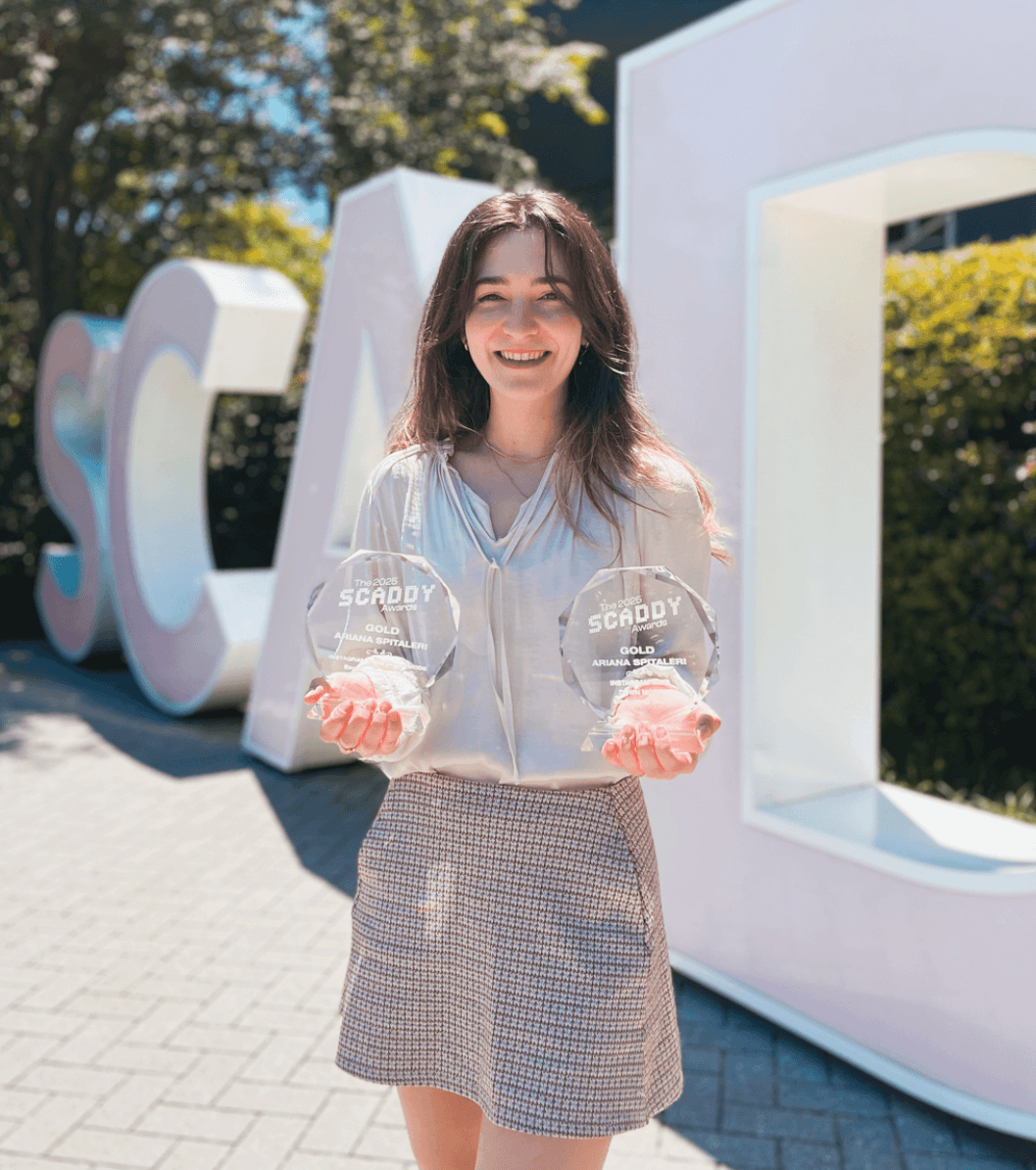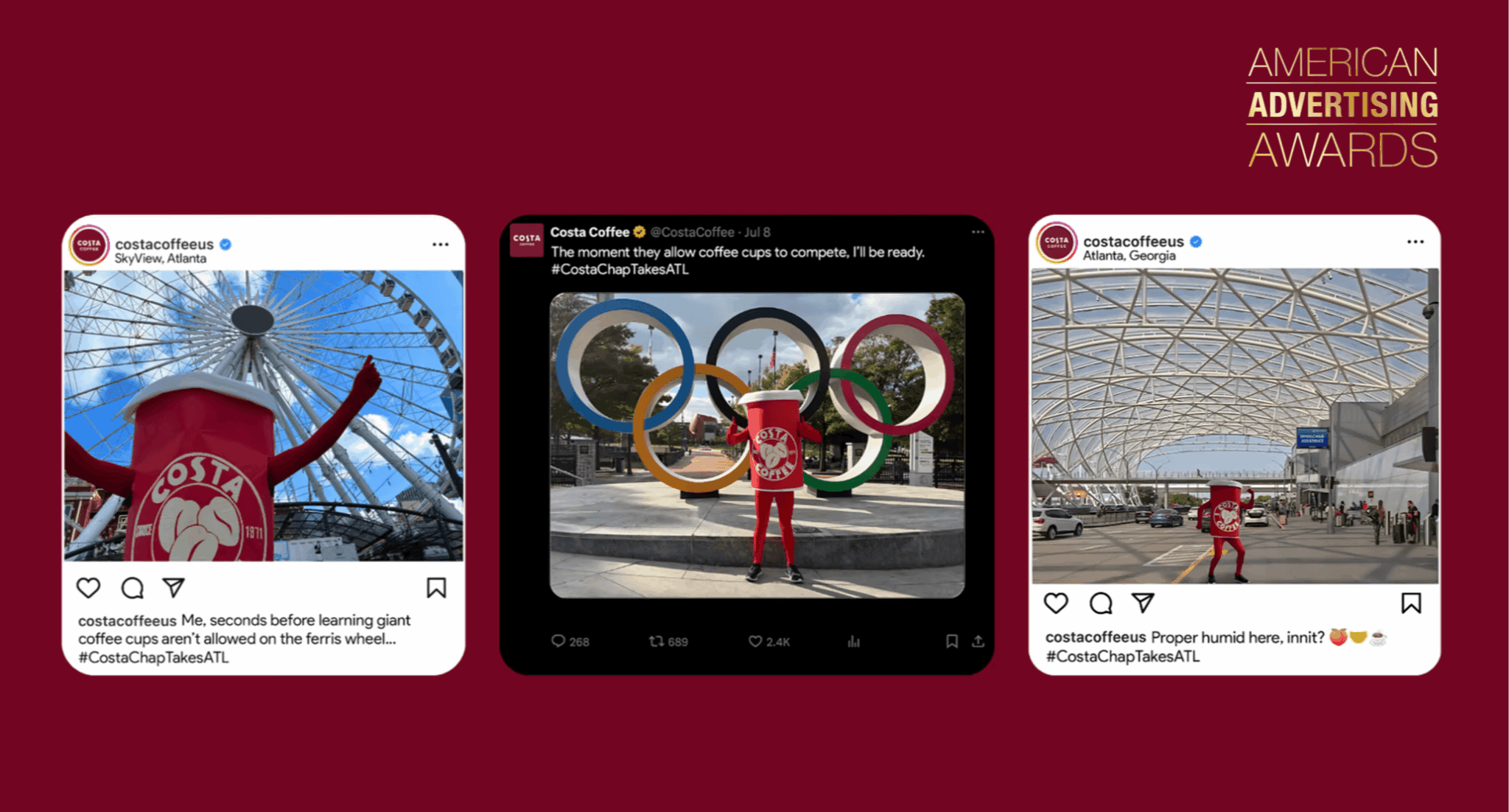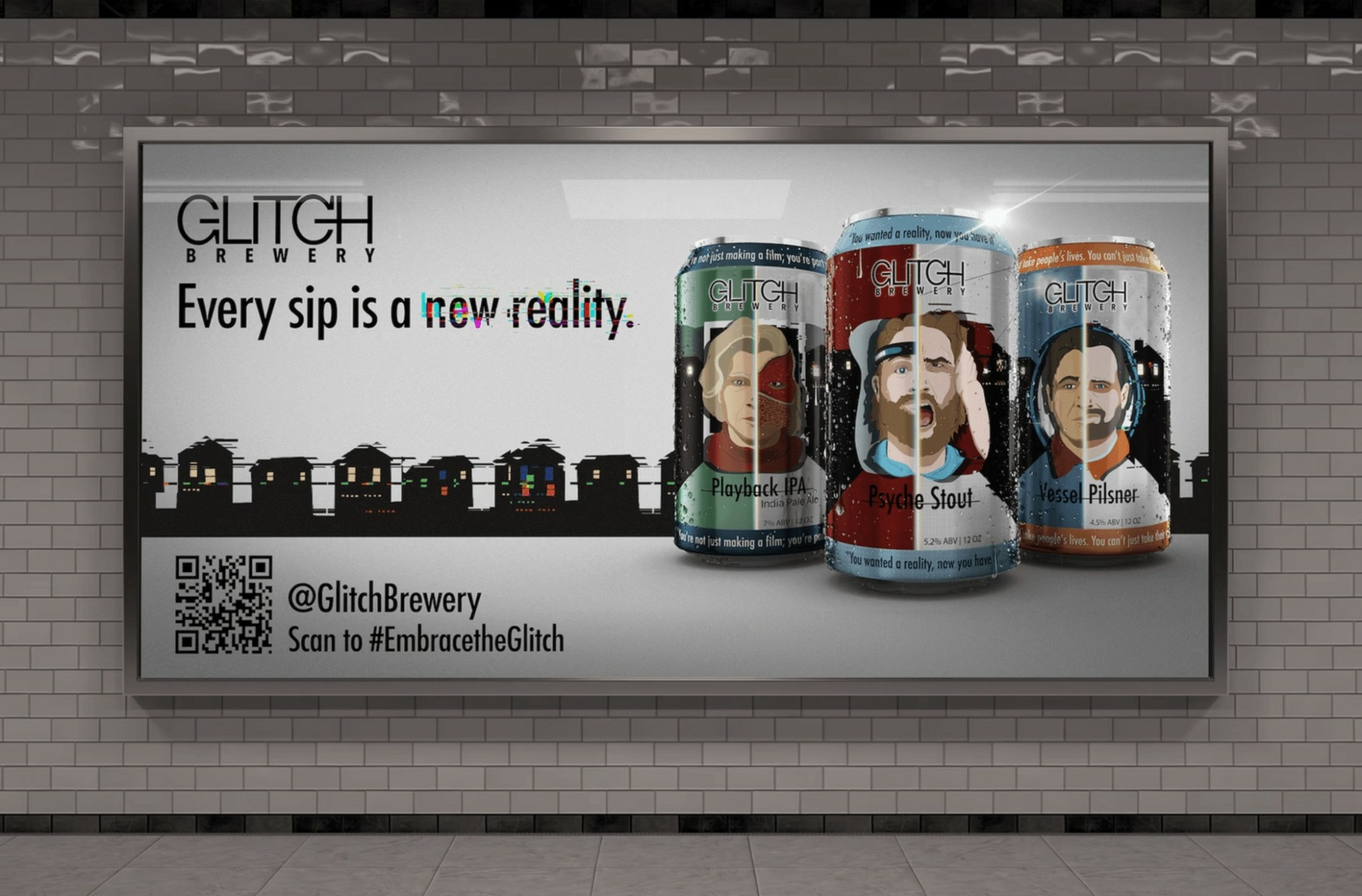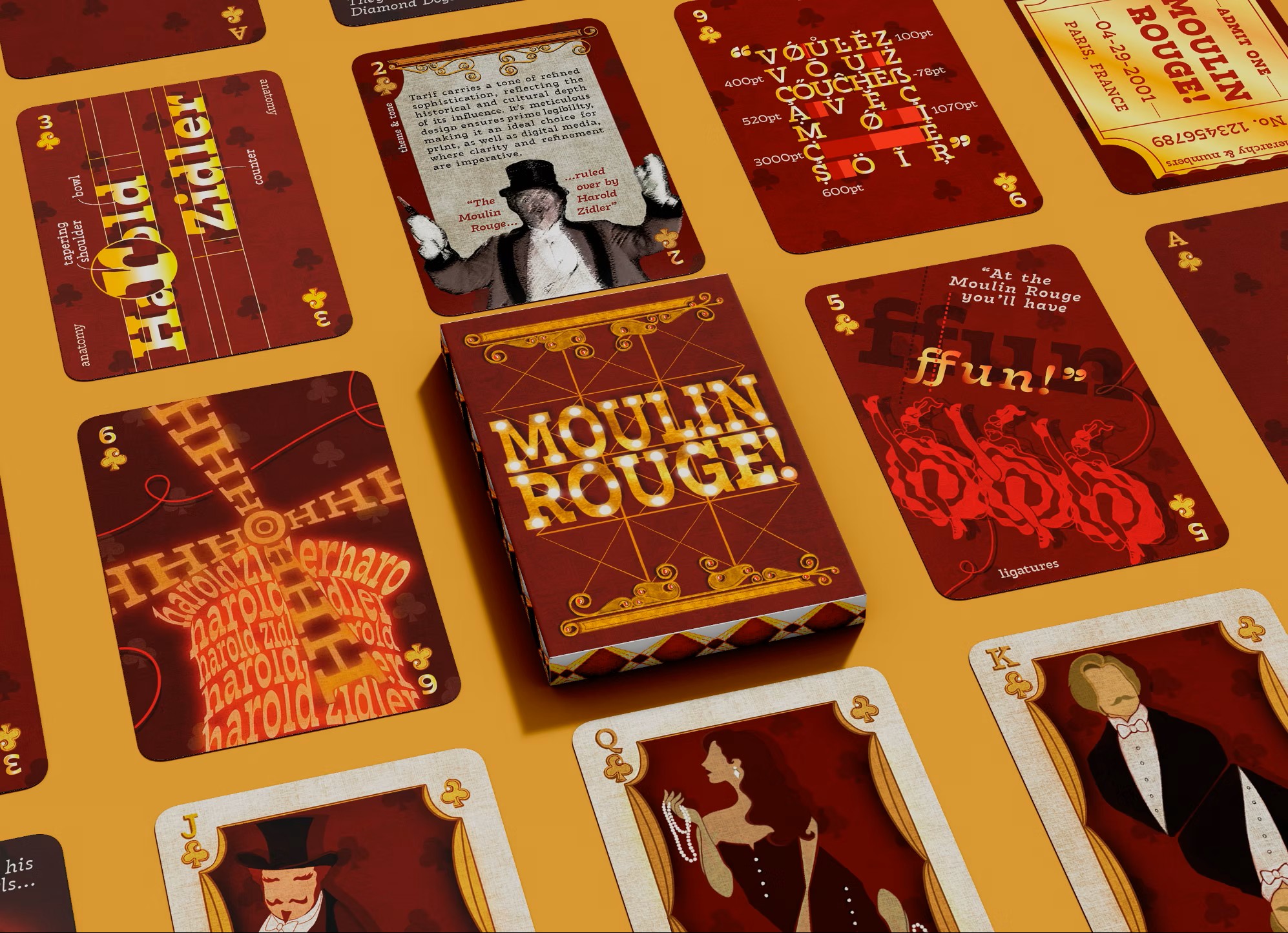Alright – so today we’ve got the honor of introducing you to Ariana Spitaleri. We think you’ll enjoy our conversation, we’ve shared it below.
Ariana, thanks for taking the time to share your stories with us today Can you talk to us about how you learned to do what you do?
How did I learn to do what I do? It’s really been a combination of formal education, real-world experience, and an innate drive for creative problem solving and visual storytelling. SCAD’s MFA Advertising program gave me an insanely strong foundation; teaching me how to think strategically, develop compelling concepts, and execute them across different media. But just as important has been what I’ve learned outside the classroom. Interning at full-service agencies and creative studios, for example, taught me about collaboration, pitching ideas confidently, and adjusting when a creative direction shifts, among countless other valuable things. That real-world context definitely helped connect the dots with my academic background. At the same time, I’ve always had a natural affinity for visual storytelling and creative thinking. Whether it was through drawing, painting, crafting, writing, or even theater (despite my crippling stage fright), I’ve always been drawn to creative expression and anything that requires me to use my imagination. So in a way, this path feels like both something I trained for and something I was always heading toward.
Looking back, I probably could’ve sped things up by giving myself permission to pursue a creative career earlier. For a long time, I told myself I didn’t want to turn something I loved into a job, as I was afraid that making art or storytelling my profession would take the joy out of it. So I kept it as a hobby and explored other paths. But had I looked into advertising sooner, I think I would’ve realized it was the perfectly dynamic intersection of creativity, strategy, and real-world impact. There’s something so rewarding about using creativity as a form of communication to solve real problems and tell stories that matter. Had I known this is what the field looked like, I probably would’ve pursued it from day one. What I’ve learned since is how valuable it is to feel passionate about what I do for a living to the point where it doesn’t feel like a job at all.
What skills do I think were most essential? Honestly, all of them, because my goal has always been to be multifaceted. I love being able to jump into any part of the creative process and speak everyone’s language. That versatility is something I take pride in. I started out with design because that was always my technical strength, and I’ve always been a visual thinker. But once I got deeper into strategy, I realized how much I loved that part too. There’s something really satisfying about figuring out the why behind a concept, like solving a puzzle. If I had to choose one essential skill, though, it would be creative problem solving; being able to step into any moment of the process, adapt, and bring value. And at the heart of it all is understanding: who we’re telling a story to, and who we’re telling a story about. That awareness is what makes the work honest, relevant, and powerful.
As for obstacles? Definitely imposter syndrome. I got my undergrad degree in anthropology, not design or marketing, so I always worried that my academic path before SCAD wouldn’t be enough to get me where I wanted to go in such a competitive field. But over time, I realized my dynamic background actually gave me a unique lens. Anthropology taught me to listen closely, observe culture, and spot patterns, all of which are superpowers in the human-centric world of advertising. And while SCAD has absolutely played a significant role in sharpening my skills and teaching me new ones, my creative instinct has always been there. I’ve always seen the world through a creative lens, it just took the right environment to bring that into focus. My journey has had its challenges, but it’s also what gave me my voice, and I’m very proud of that.
Ariana, love having you share your insights with us. Before we ask you more questions, maybe you can take a moment to introduce yourself to our readers who might have missed our earlier conversations?
I’m a multicultural, multifaceted creative with a Master of Fine Arts in Advertising, a background in anthropology, a deep love for storytelling, and a passion for connecting ideas to people in meaningful, innovative ways. My creative journey has been far from linear, but that’s what makes it unique. Over the years, I explored everything from theater to forensic anthropology, considered law school, even looked into joining the FBI. And through it all, I was always creating; drawing, designing, crafting, writing, without realizing that those instincts would turn into the career I was looking for.
It wasn’t until I found advertising that everything clicked. For the first time, I discovered a space that blends strategy, storytelling, and imagination in a way that feels fully tailored to how I think. Now, I work at the intersection of creative strategy, campaign development, and concept storytelling for brands; creating work that not only solves relevant problems, but actually connects with people on a deep and human level.
What I bring to the table is range. I’m someone who thrives in every part of the creative process. Whether it’s building a campaign from a strategic insight, writing conceptual copy, or visually designing and executing, I love being able to adapt, jump in, and speak the language of whatever team I’m on. Through SCAD and hands-on internship opportunities, I’ve worked on everything from brand design and tech-driven experiential campaigns, to healthcare storytelling; always drawn to work that feels smart, emotional, and forward-thinking.
What sets me apart is perspective. Coming from a multicultural background and an unconventional academic path has helped me see patterns others might miss, and design creative work that resonates with all kinds of people. I can definitely say I’m most proud of my unwavering drive and ambition throughout my entire journey, because it means that now, I’m here with a real sense of purpose, not just for myself, but for the people I get to tell stories for. I’ve been honored with ADDY Awards and SCADDY Awards, and after everything it took to get here, having my work recognized on that level is something I’ll be forever grateful for and will never take for granted.
What do you find most rewarding about being a creative?
For me, the most rewarding moments come from creating work that feels fresh and forward-thinking, while still grounded and human. In a world where the lines between technology and humanity are controversially beginning to blur, being able to bring the human aspect to the work feels more important than ever. That’s what makes this field so exciting; bridging what’s technologically new with what’s emotionally real. Because at the end of the day, innovation is only meaningful if it actually connects with people, and the same thing can be said about advertising itself.
There will always be stories to tell and people to connect with, but how we do that keeps changing, and I find that incredibly inspiring. Especially now, as technology continues to rise, I’ve become really passionate about tech-driven experiential design. In a field as saturated as advertising, standing out through traditional methods isn’t enough anymore. But more and more, we’re starting to see technology being used as not just a medium, but also a tool for creating immersive, human-centered experiences. What excites me most is how we’re currently at a place where technology can support big, ambitious creative ideas, but it’s still new enough that we’re just scratching the surface of what’s possible. For instance, I’m really inspired by work like BBDO’s Meta Quest Thrillboards, where they created “billboards” people could walk into by projecting the visuals on a curtain of water. That kind of thinking completely reimagines what advertising can be. It’s not just about telling people something, but about inviting them to feel it, live it, and take it with them.
That’s ultimately the now of advertising: using technology not just to impress, but to create human connections and experiences people will remember for a very long time. And being a creative today means having the tools, and the responsibility, to lead that shift. That’s what makes the work feel so meaningful.
We’d love to hear a story of resilience from your journey.
A story that really illustrates my resilience is definitely the long, winding path it took to find my passion. I started college in 2016, just after moving from Doha, Qatar, where I had gone to high school. The cultural shift was intense; from a small international school in the Middle East to a massive university in Lubbock, Texas, and I struggled to find my footing both socially and academically.
I began as a theater major, but during my first year I discovered a deep interest in forensic anthropology, which led me to switch majors. Even with the change, I pushed myself to graduate in just three years because I didn’t want the pivot to set me back. I graduated in March 2020, just as the world shut down. The job market collapsed, and like many others, I suddenly found myself with time, uncertainty, and no clear direction.
But I refused to just sit and wait, and instead used that time to explore every path I thought might be “the one.” I studied for the LSAT and considered law school. I looked into joining the FBI to pursue my fascination with forensics. I joined a kick-boxing gym, I earned my TEFL certification to teach English abroad, and I even took Korean lessons to keep myself mentally engaged. And through it all, I was constantly doing creative work like drawing, painting, crafting; mostly as a therapeutic outlet. But even then, I never thought to look more into the creative industry. Creativity was always there, but I kept it in the background while trying to force other paths to fit.
Eventually in early 2022, I decided to quit my temporary job in Texas and moved to Atlanta, hoping a fresh start would open a new set of doors for me. I started casually browsing graduate programs, thinking maybe a master’s degree could help me re-center. That’s when I stumbled across SCAD. And the funny thing about all this is: advertising was one thing I had never even thought to explore, but ironically, it clicked faster than anything else had in the multiple years of trial and error before it. The creativity, the strategy, the storytelling, it felt like everything I’d been circling around had finally come together in one place.
Looking back, I realize I’ve never been able to stay still until I felt truly aligned with where I was headed. That restlessness, while physically and emotionally exhausting at times, is what’s kept me resilient for the past 9 years. Every detour taught me something, and every pivot brought me closer to where I was meant to be. And once I found it, I knew.
Contact Info:
- Website: arispitaleri.com
- Instagram: @arispi.galleri
- Linkedin: www.linkedin.com/in/arianagspitaleri








